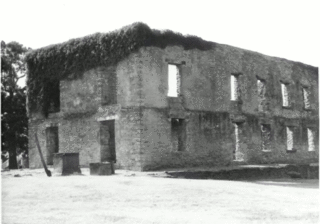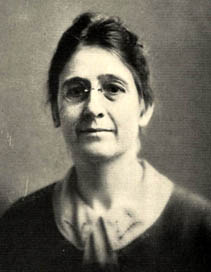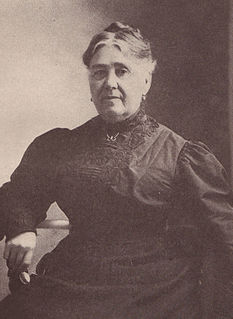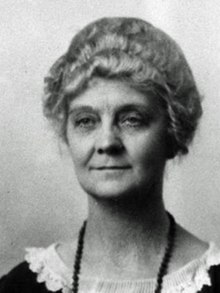Sarah (Sally) Hemings was an enslaved woman of mixed race owned by President Thomas Jefferson. Multiple lines of evidence indicate that Jefferson had a long-term sexual relationship with Hemings, and historians now broadly agree that he was the father of her six children. Hemings was a half-sister of Jefferson's wife, Martha Jefferson. Four of Hemings' children survived into adulthood. Hemings died in Charlottesville, Virginia, in 1835.

Muskogee is the eleventh-largest city in Oklahoma and the county seat of Muskogee County. Home to Bacone College, it lies approximately 48 miles (77 km) southeast of Tulsa. The population of the city was 39,223 as of the 2010 census, a 2.4 percent increase from 38,310 in 2000.

The term "Five Civilized Tribes" derives from the colonial and early federal period in the history of the United States. It refers to five Native American nations—the Cherokee, Chickasaw, Choctaw, Creek (Muscogee), and Seminole. These are the first five tribes that European Americans generally considered to be "civilized". Examples of colonial attributes adopted by these five tribes, which led European Americans to label them civilized, include Christianity, centralized governments, literacy in English, market participation, written constitutions, intermarriage with white Americans, and plantation slavery practices. The Five Civilized Tribes tended to maintain stable political relations with the European Americans.

Fort Gibson is a historic military site next to the modern city of Fort Gibson, in Muskogee County Oklahoma. It guarded the American frontier in Indian Territory from 1824 to 1888. When it was constructed, the fort was farther west than any other military post in the United States. It formed part of the north-south chain of forts that was intended to maintain peace on the frontier of the American West and to protect the southwestern border of the Louisiana Purchase. The fort succeeded in its peacekeeping mission for more than 50 years, as no massacres or battles occurred there.
Samuel Benton Callahan was an influential, mixed blood Creek politician, born in Mobile, Alabama, to a white father, James Callahan, and Amanda Doyle, a mixed-blood Creek woman. One source says that James was an Irishman who had previously been an architect or a shipbuilder from Pennsylvania, while Amanda was one-eighth Muscogee. His father died while he was young; he and his mother were required to emigrate to Indian Territory in 1836. His mother married Dr. Owen Davis of Sulphur Springs, Texas, where they raised Samuel.

The Curtis Act of 1898 was an amendment to the United States Dawes Act; it resulted in the break-up of tribal governments and communal lands in Indian Territory of the Five Civilized Tribes of Indian Territory: the Choctaw, Chickasaw, Muscogee (Creek), Cherokee, and Seminole. These tribes had been previously exempt from the 1887 General Allotment Act because of the terms of their treaties. In total, the tribes immediately lost control of about 90 million acres of their communal lands; they lost more in subsequent years.

John Robert Thomas was a U.S. Representative from Illinois. He was later appointed a U.S. District Judge in the Indian Territory, which then encompassed most of the eastern part of present-day Oklahoma, serving from 1898 to 1901. After statehood, he served on the Oklahoma State Code Commission which was tasked with reviewing and editing the new state laws that had been hastily put together during the rush to statehood. After returning to his private law practice, he went to the Oklahoma state prison at McAlester to interview an inmate on January 19, 1914, when he was killed by three other inmates who shot him to death while escaping prison.

Fort Washita is the former United States military post and National Historic Landmark located in Durant, Oklahoma on SH 199. Established in 1842 by General Zachary Taylor to protect citizens of the Choctaw and Chickasaw Nations from the Plains Indians it was later abandoned by Federal forces at the beginning of the American Civil War. Confederate troops held the post until the end of the war when they burned the remaining structures. It was never reoccupied by the United States military. After years in private hands the Oklahoma Historical Society bought the fort grounds in 1962 and restored the site. Today, the Fort Washita Historic Site and Museum is a tourist attraction and hosts several events throughout the year, and it is jointly managed by the Chickasaw Nation and the Oklahoma Historical Society.

The Thomas-Foreman Historic Home, also known as the Grant Foreman House, is a house in Muskogee, Oklahoma, United States, built by Judge John R. Thomas on a tract of prairie land. It was later named after Thomas' son-in-law, Grant Foreman, by the Muskogee Historical Society and the National Register of Historic Places.

Angie Elbertha Debo, was an American historian who wrote 13 books and hundreds of articles about Native American and Oklahoma history. After a long career marked by difficulties, she was acclaimed as Oklahoma's "greatest historian" and acknowledged as "an authority on Native American history, a visionary, and an historical heroine in her own right."

Roberta Lawson was a Lenape-Scots-Irish activist, community organizer, and musician. During World War I, she was the head of the Women's Division of the Oklahoma Council of Defense. She was president of the Oklahoma State Federation of Women's Clubs, which organized to support community welfare and educational goals. As music chairman of the General Federation of Women's Clubs, in 1926 she wrote Indian Music Programs for clubs and special days of celebration. In 1935 she was elected president of the General Federation, and served a three-year term leading its two million members to work toward goals of "uniform marriage and divorce laws, birth control, and civic service."

Marie L. Wadley was an American co-founder of the Five Civilized Tribes Museum in Muskogee, Oklahoma. Wadley became the museum's first president after its opening.
Rosana Chouteau was the first woman to be elected chief of the Osage Beaver Band, a clan of the Native American Osage Nation in Oklahoma, in 1875, following the death of her uncle.

Monticello Seminary, founded in 1835, was an American seminary, junior college and academy in Godfrey, Illinois. The 215 acres (87 ha) campus was the oldest female seminary in the west, before it closed in 1971. The buildings are now part of Lewis and Clark Community College.

Sophia Alice Callahan (Muscogee) was a novelist and teacher. Her novel, Wynema, A Child of the Forest (1891) is thought "to be the first novel written by a Native American woman." Shocked about the Massacre at Wounded Knee at the Pine Ridge Indian Reservation, which took place about six months before she published her book, Callahan added an account of this and the 1890 Ghost Dance of the Lakota to her book in the first fictional treatment of these subjects.

Susie Peters was an American preservationist and matron at the Anadarko Agency, who worked to promote Kiowa artists. Born to white parents in Tennessee, she moved to Indian Territory with her family prior to Oklahoma statehood. While working as a matron for the Indian Agency, she discovered the talent of the young artists who would become known as the Kiowa Six and introduced them to Oscar Jacobson, director of the University of Oklahoma's art department. She was honored by the National Hall of Fame for Famous American Indians and both adopted by the tribe and given a Kiowa name in 1954. In 1963, the Anadarko Philomathic Club created an annual art award in her name. She was inducted into the Oklahoma Women's Hall of Fame in its inaugural year, 1982.

Electa Quinney (1798-1885) was a Mohican and member of the Stockbridge-Munsee Community. She founded one of the first schools in what would become Wisconsin and was the first woman to teach in a public school in the territory which would be Wisconsin.

Anna Lewis (1885–1961) was a noted teacher, historian and writer, who specialized in American history, and particularly the history of the Southwest. Born in what was then Indian Territory to a family of mixed Choctaw and European Ancestry, she earned doctoral degrees from University of California, Berkeley (1915) and University of Oklahoma (1930). She was the first woman to receive a Ph. D. at the University of Oklahoma. Lewis spent her educational career at the Oklahoma College for Women. She wrote two books and numerous articles for publications in her area of interest before retiring in 1956 to a home she had built in southern Oklahoma. She died in 1961.

Narcissa Chisholm Owen was an American educator, memoirist, and artist of the late 19th and early 20th century. She was the daughter of Old Settler Cherokee Chief Thomas Chisholm, wife of Virginia state senator Robert L. Owen Sr. and mother of U.S. Senator Robert Latham Owen Jr. and Major William Otway Owen. Narcissa Owen is most recognized for her Memoirs written in 1907, where she narrates accounts of her life along with the stories and culture of her Cherokee relatives.
















